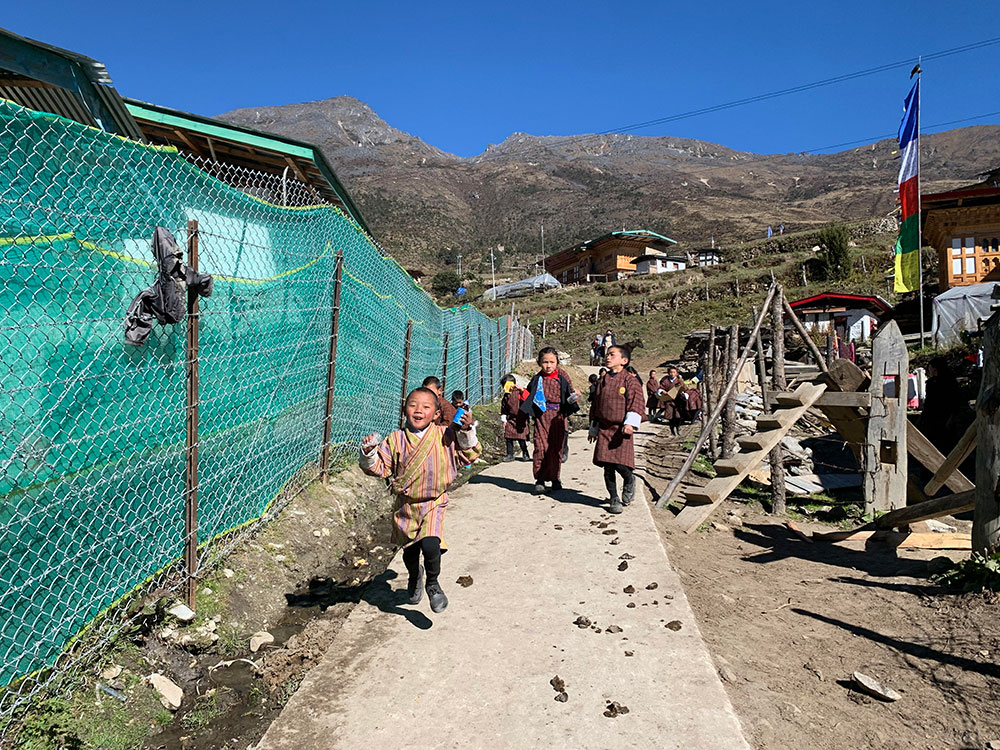Yangyel Lhaden
The upgradation of Laya Lower Secondary School to Laya Central School has helped reduce the dropout rate, according to educational officials and residents of Laya.
With the upgradation of school in 2018, children now study at least until Class 10.
In 2018, Laya Lower Secondary School had 146 students. Today, there are 155 students in Laya Central School.
Dawa Tshering, a parent, said that he wanted his son to study and have a comfortable life. “I started collecting cordyceps at the age of 13. There is money but it is a hard life which I don’t want for my son.”
Kinley Zam, a mother, enrolled both her daughters in a nunnery. Her eldest son is a monk. She is determined to support her youngest son’s education until graduation. “In the past, at least one child had to be enrolled in a monastery.”
Conducting annual rituals in our village was expensive and the people did not get monks due to the remoteness of the village, Kinley Zam said. “With the road accessibility until Tongchudrak, things have now changed.”
Chief dzongkhag education officer, Kinley, said that the decreasing dropout rate in Laya was due to boarding facilities and school feeding. “Parents are also aware of the importance of education and skills in the 21st century.”
There are also awareness programmes in the community through counselling services, parenting education in collaboration with gewog and chiwog to reach out to the parents, Kinley added.
“Children dropped out of school early and arranged marriages were common in the past,” Kinley said. “Children were also kept at home to help parents in business and domestic work, which was more common in small families.”
Leki Tshewang, a Class 10 student of Laya Central School, wants to become a police officer. He hopes to perform well in board exam and pursue higher studies. “Now, parents are more aware of education.”
Pema Leki, another Class 10 student of Laya Central School, wants to become an army officer. His favourite subject is Science. “I saw elder brothers and sisters giving up education because they had to study in Bjishong Central School in Gasa to continue after Class VIII. It is so much more convenient now.”
“Laya is very cold, and if we have heaters at our school, it could make learning easier,” Pema Leki said.
Kinley said that the school strives to improve its overall academic performance despite many challenges.
In Laya, the school begins on March 1, which is late by almost one month, but the school has to follow the same syllabus.
In the past, the school was mostly operated by a few teachers. “This affected the foundation of the students,” Kinley said. “The frequent change of school leaders was also a reason for quality failure.”
Currently, there are 19 teaching staff at the school.
In the 2023 academic session, there were only two girl students in Class IX. Most students couldn’t clear Class VIII board examination.
The lack of facilities such as computers, strong internet connectivity, and competency of teachers in the use of ICT were also some of the challenges faced by the school in the past, according to Kinley.
“The current challenge in Laya is teacher attrition—five teachers resigned between March and October,” Kinley said. “The school has only a small library and could not establish a science laboratory and ICT rooms. The school also does not have adequate heating facilities.”


